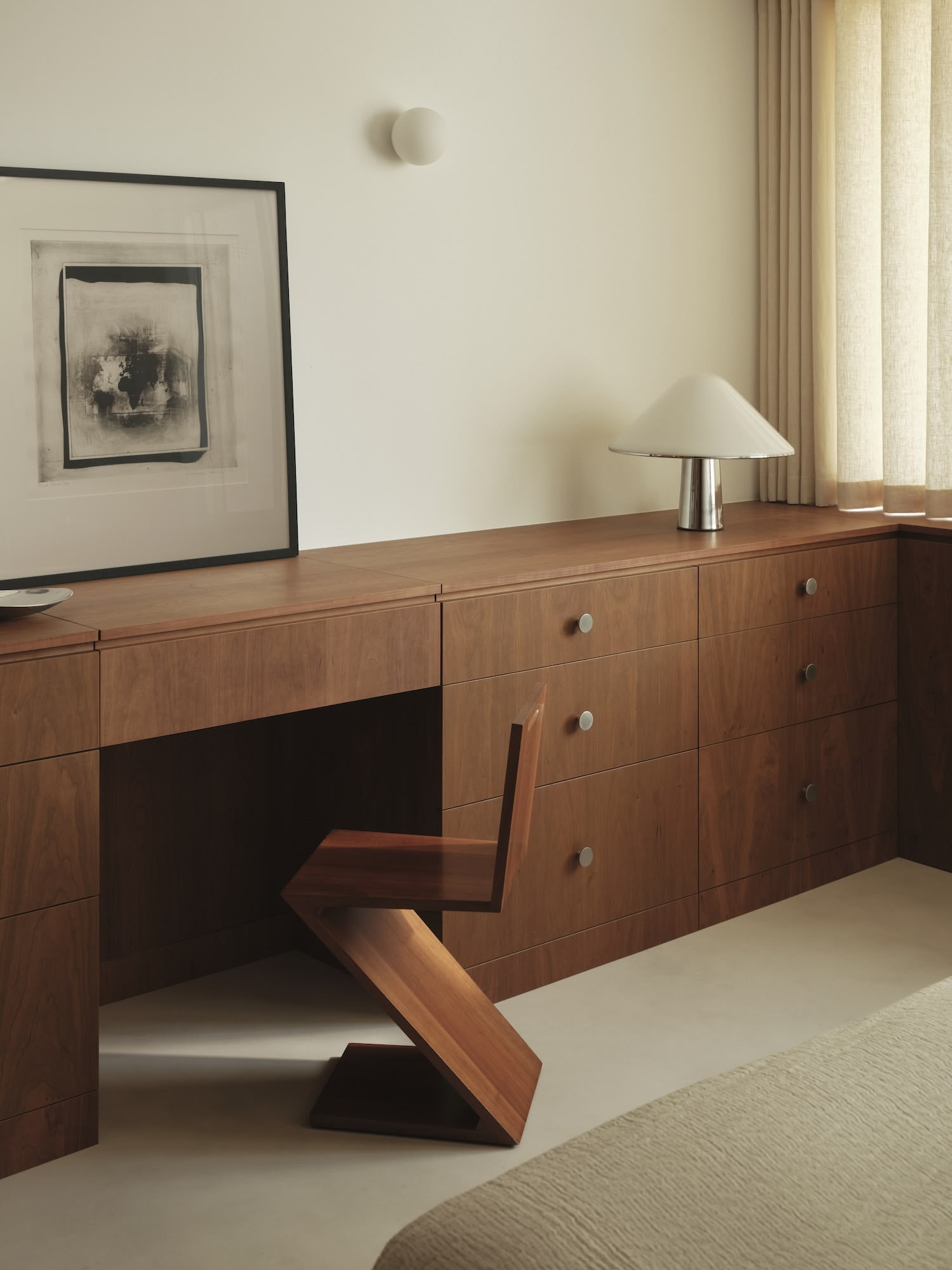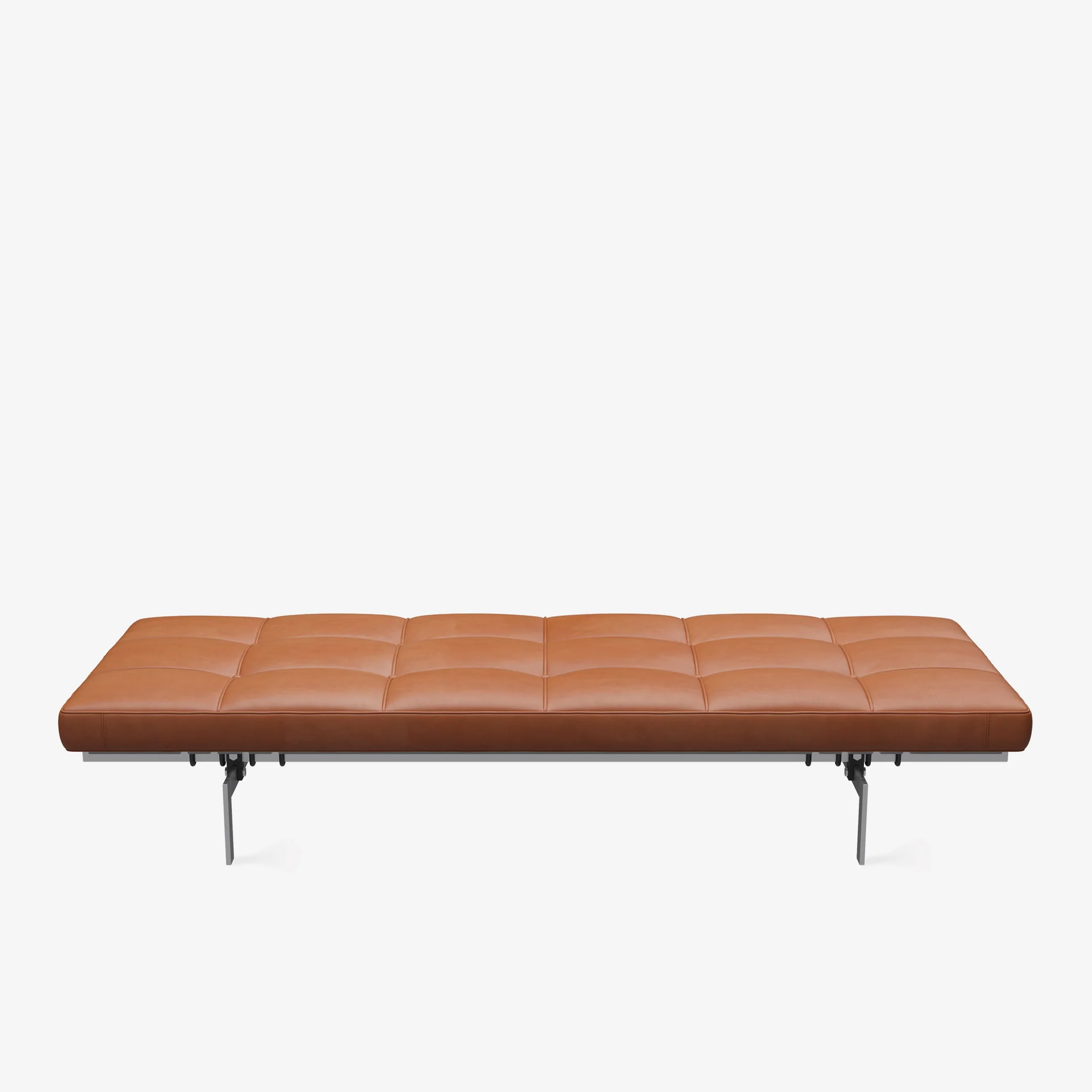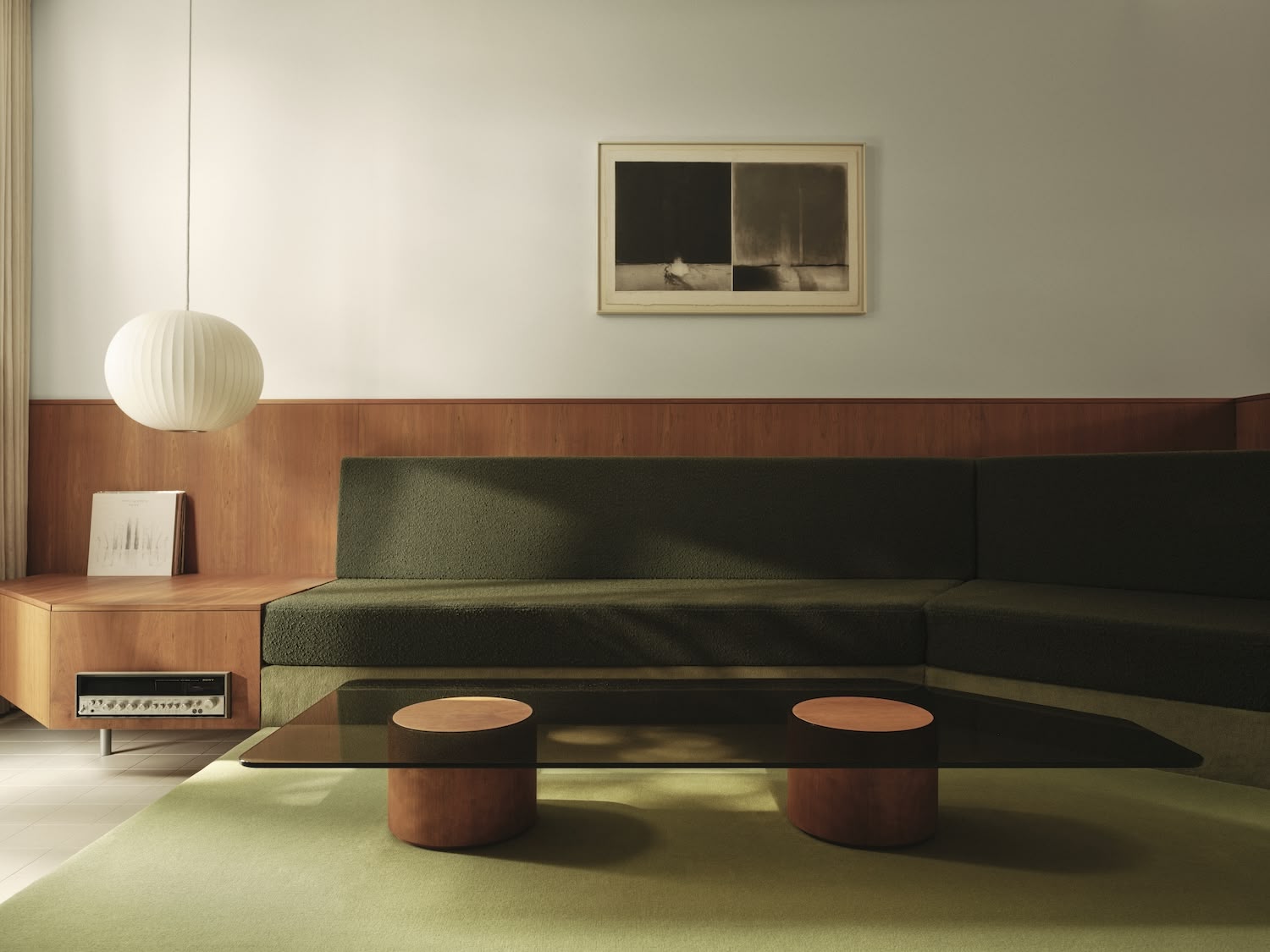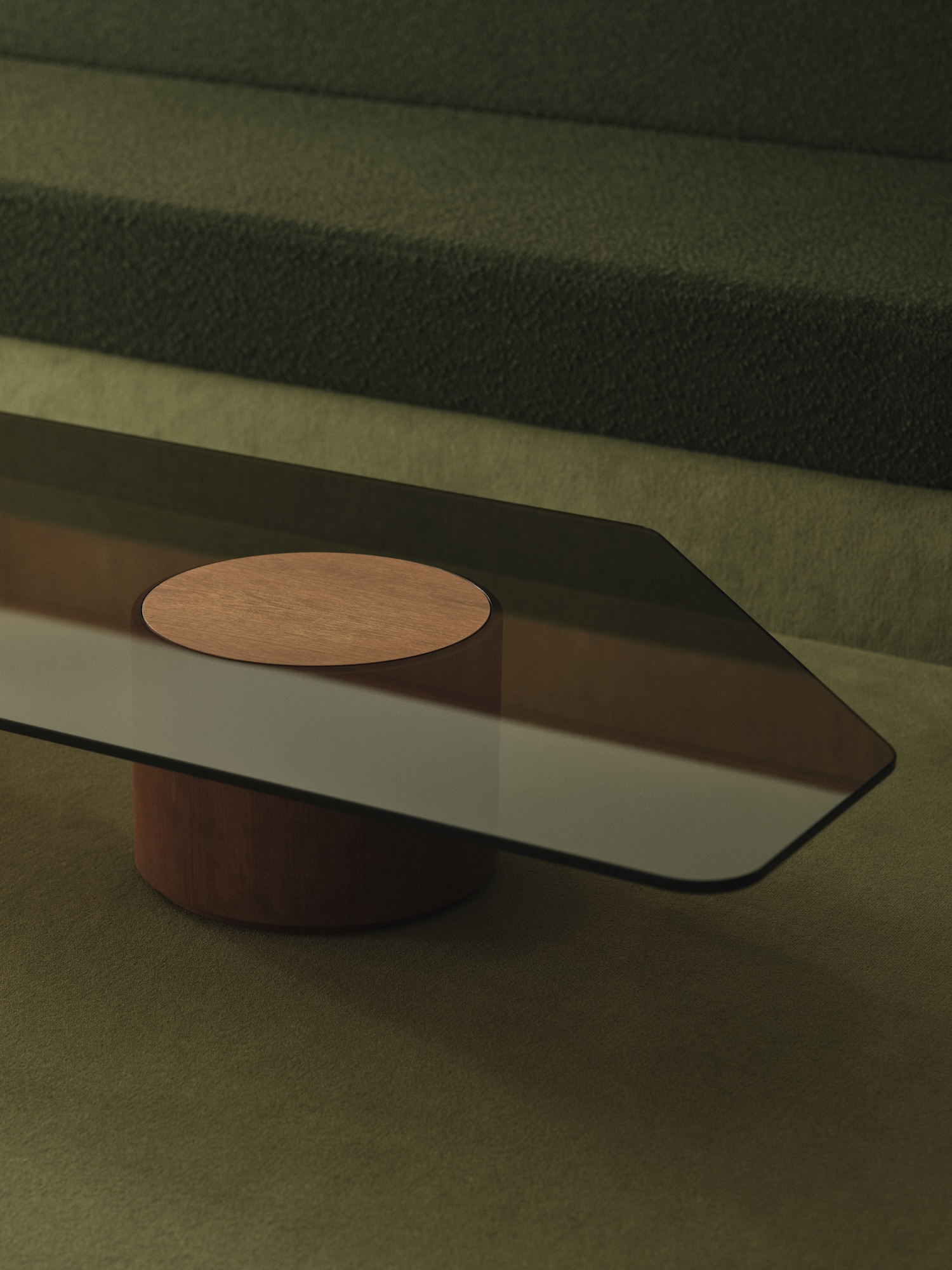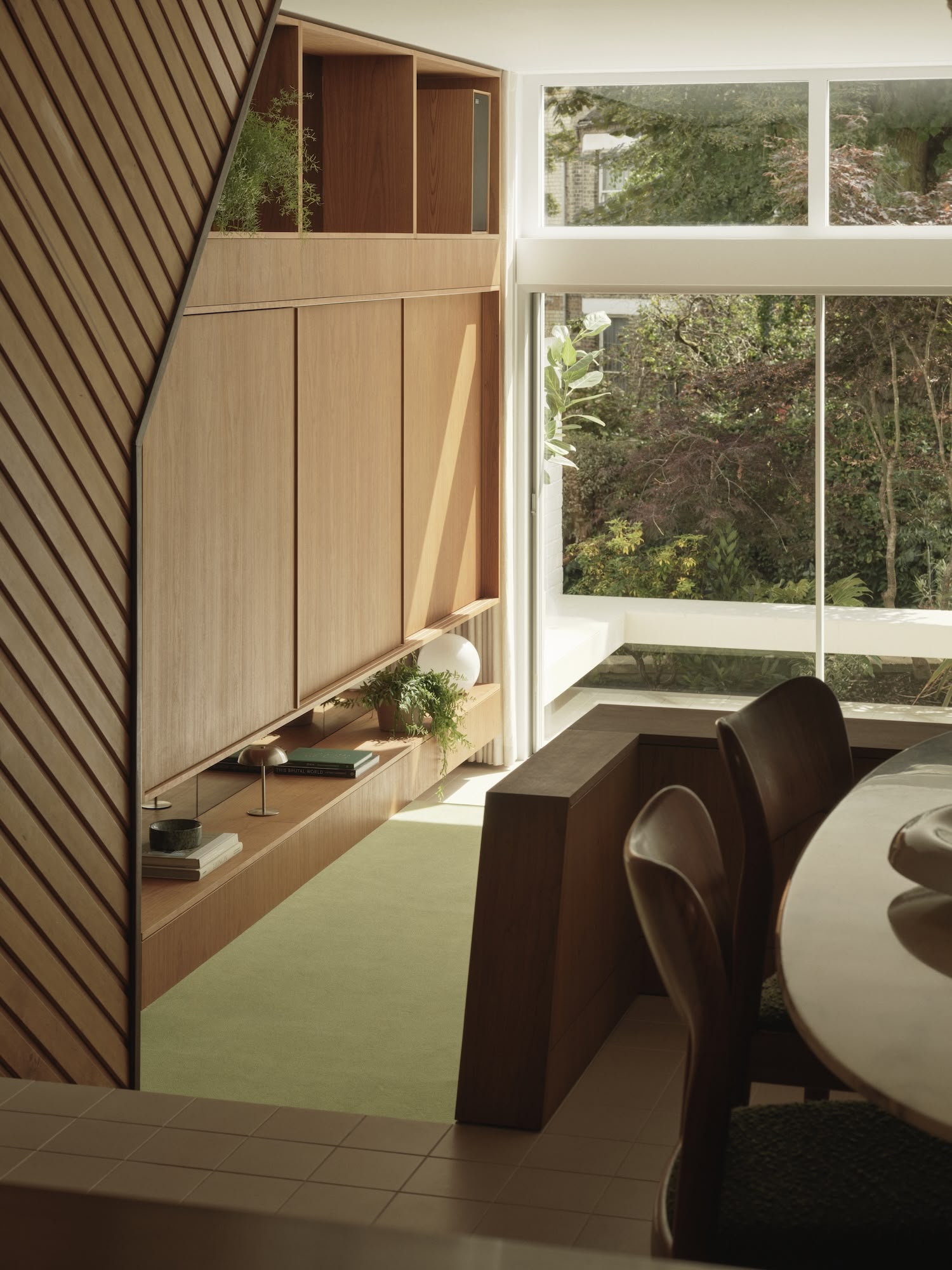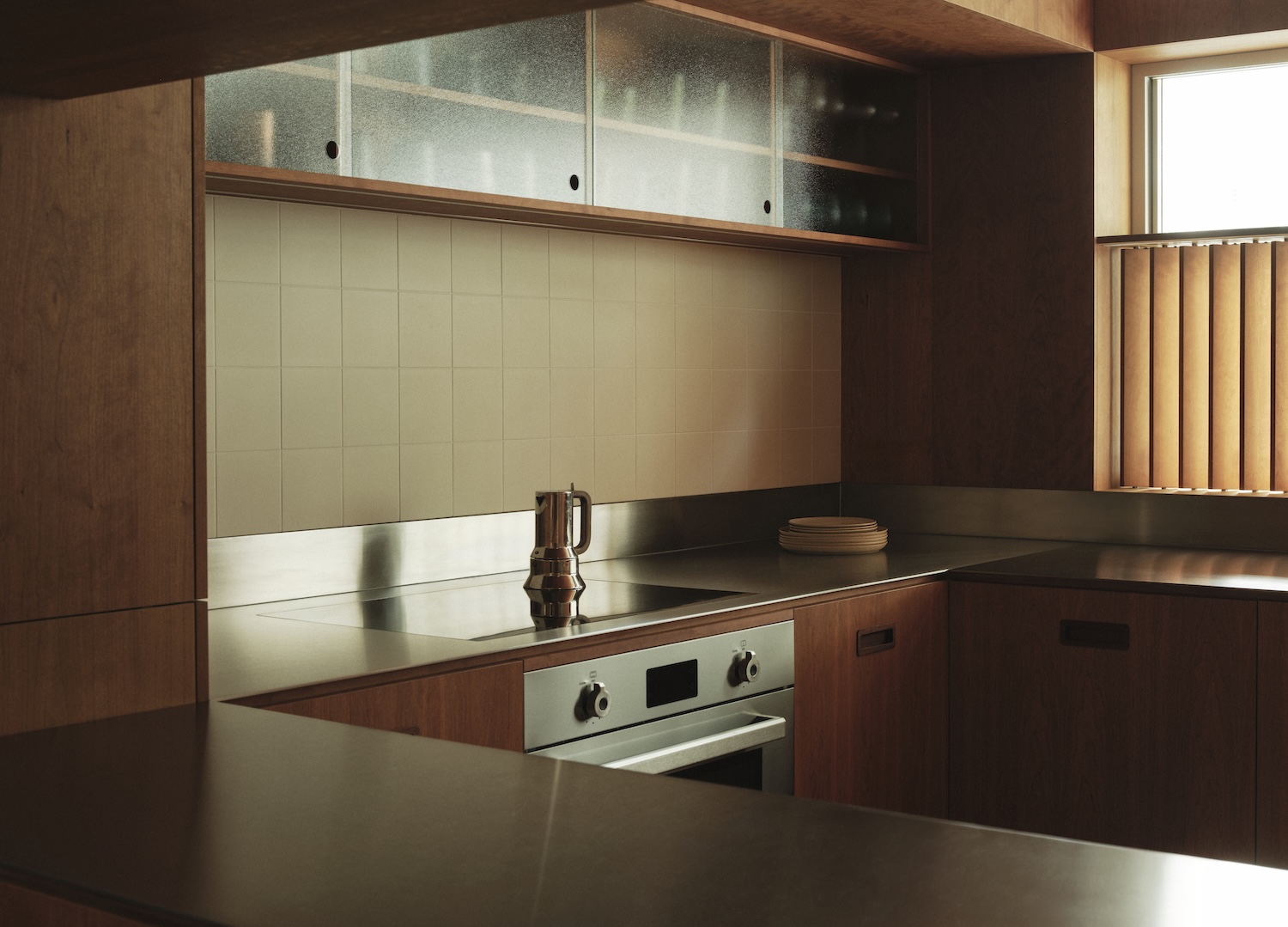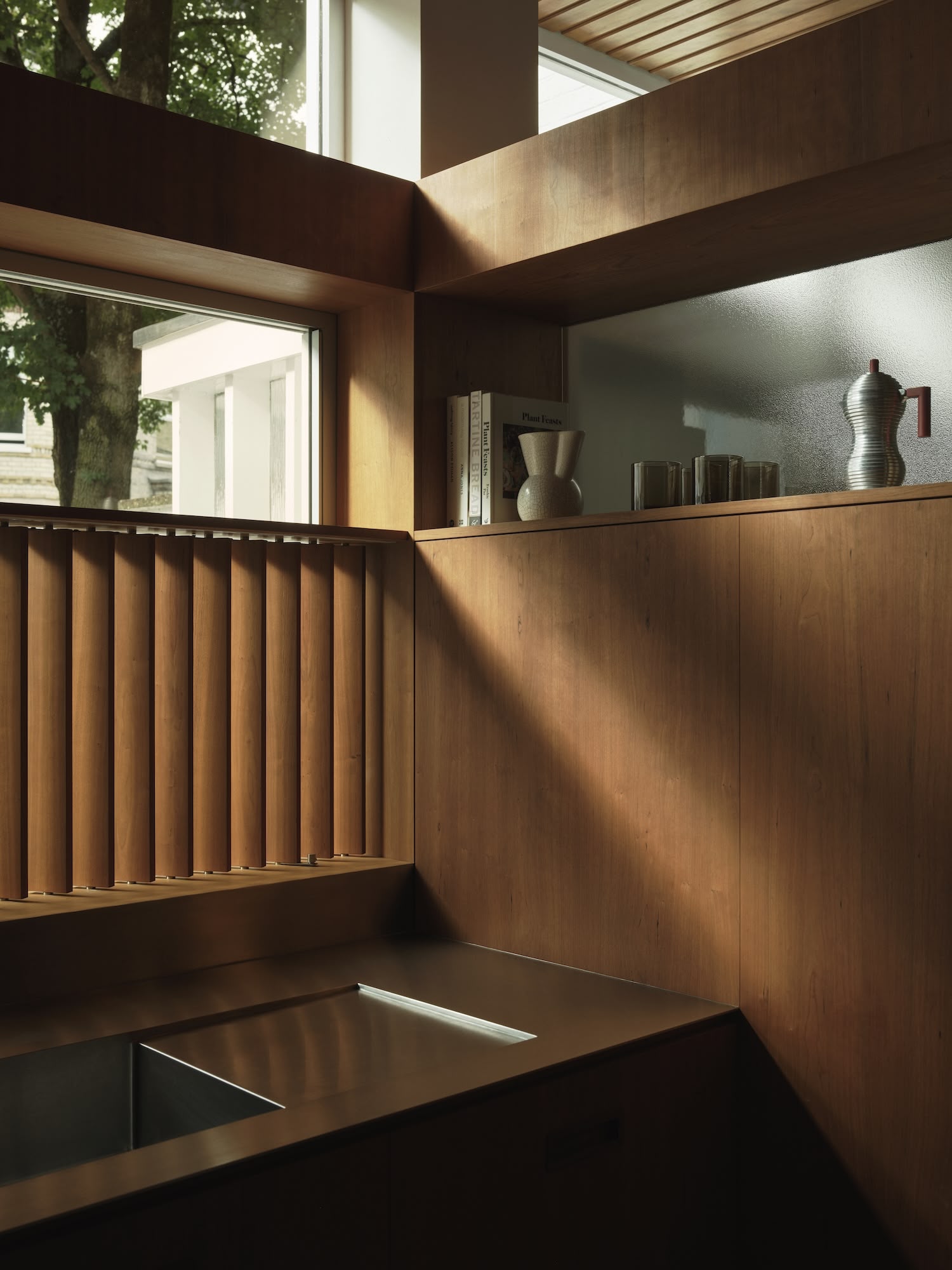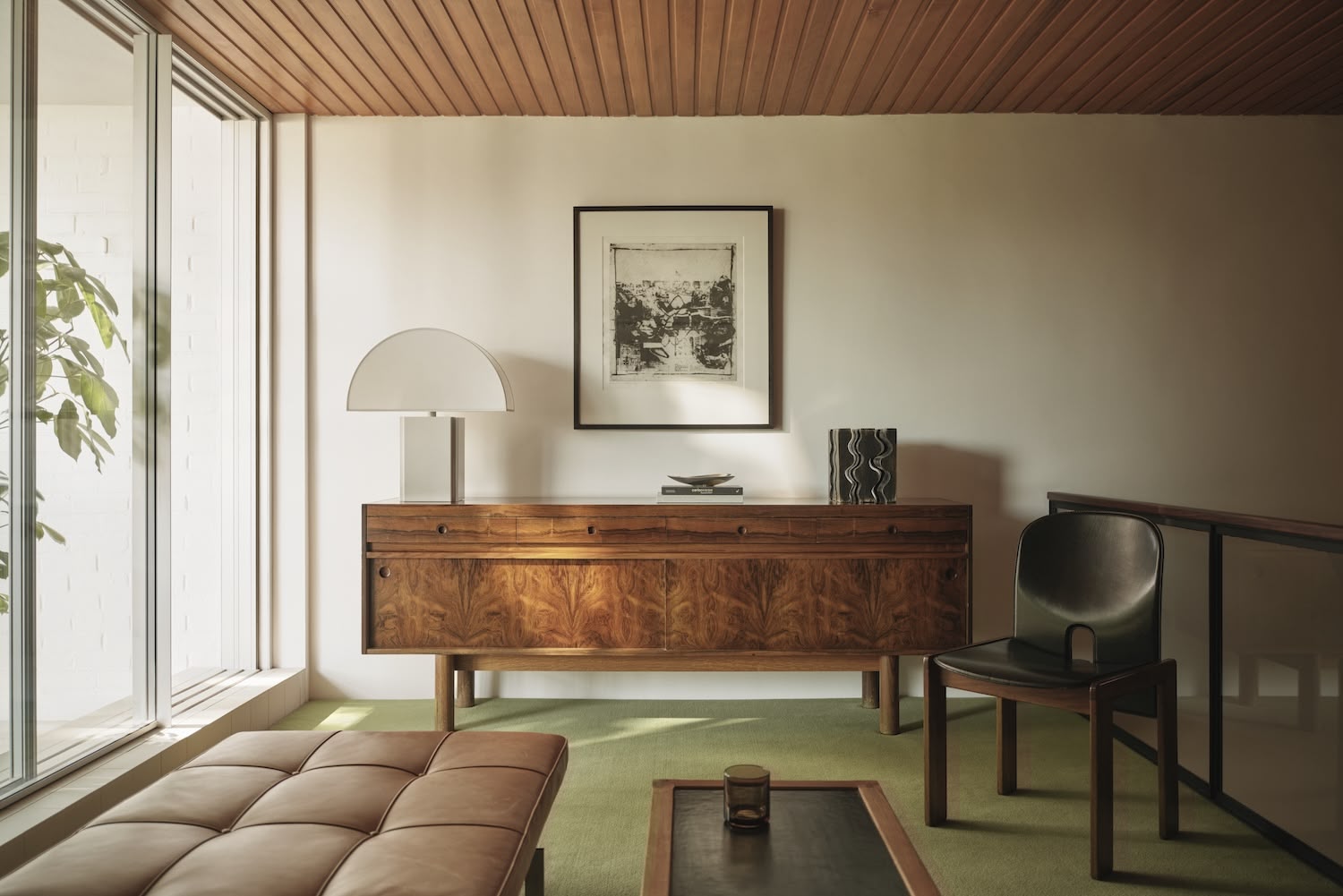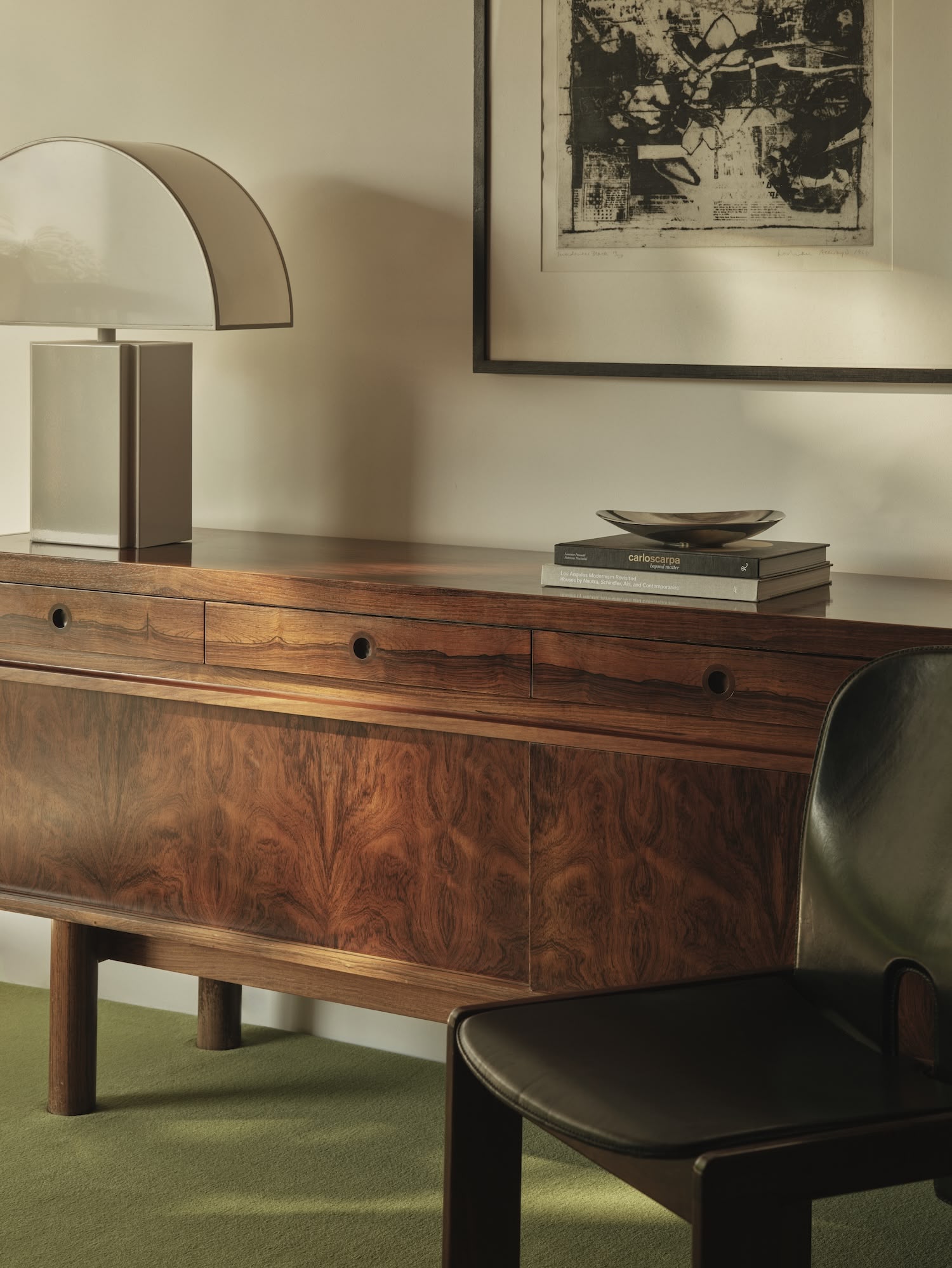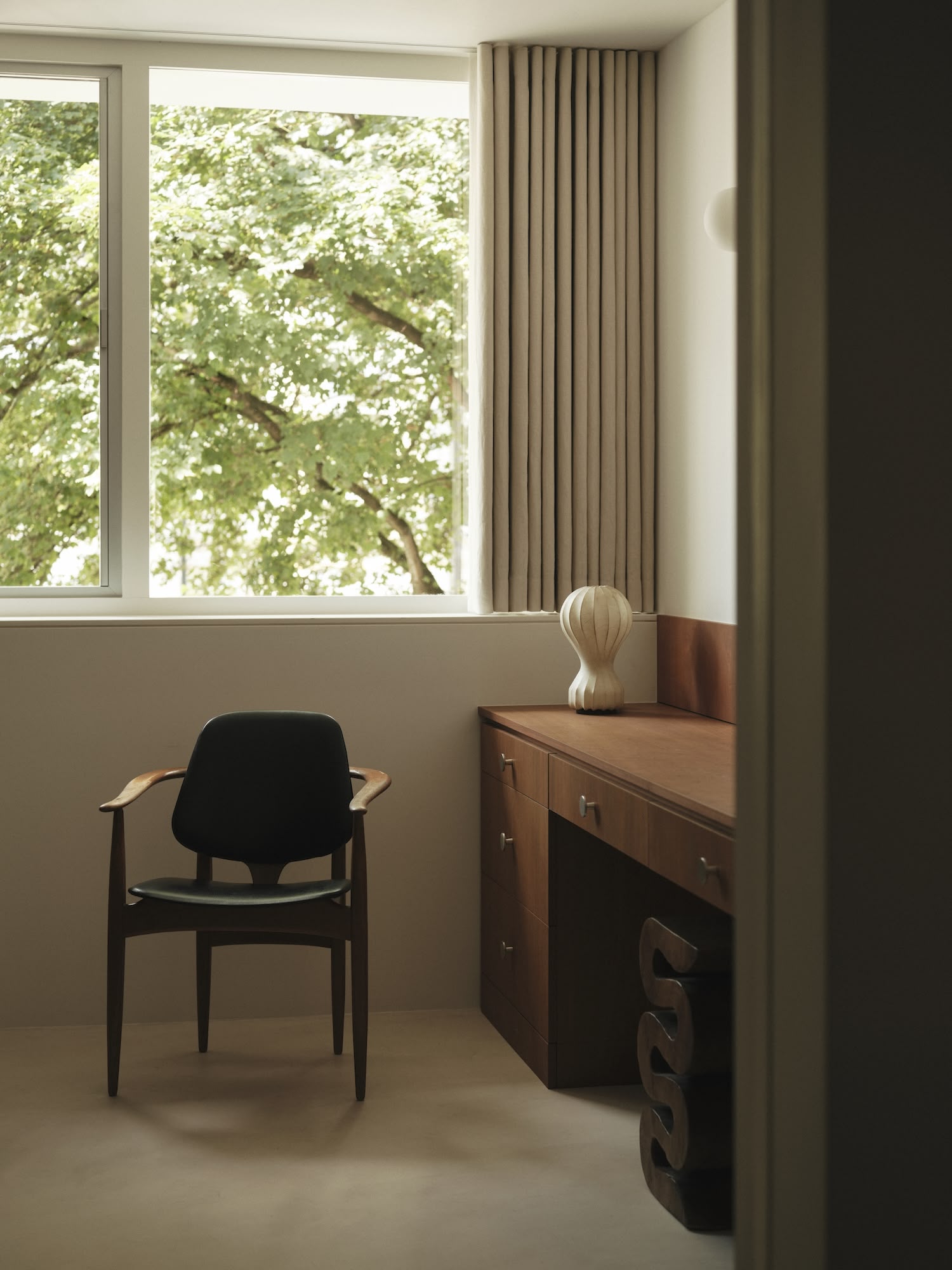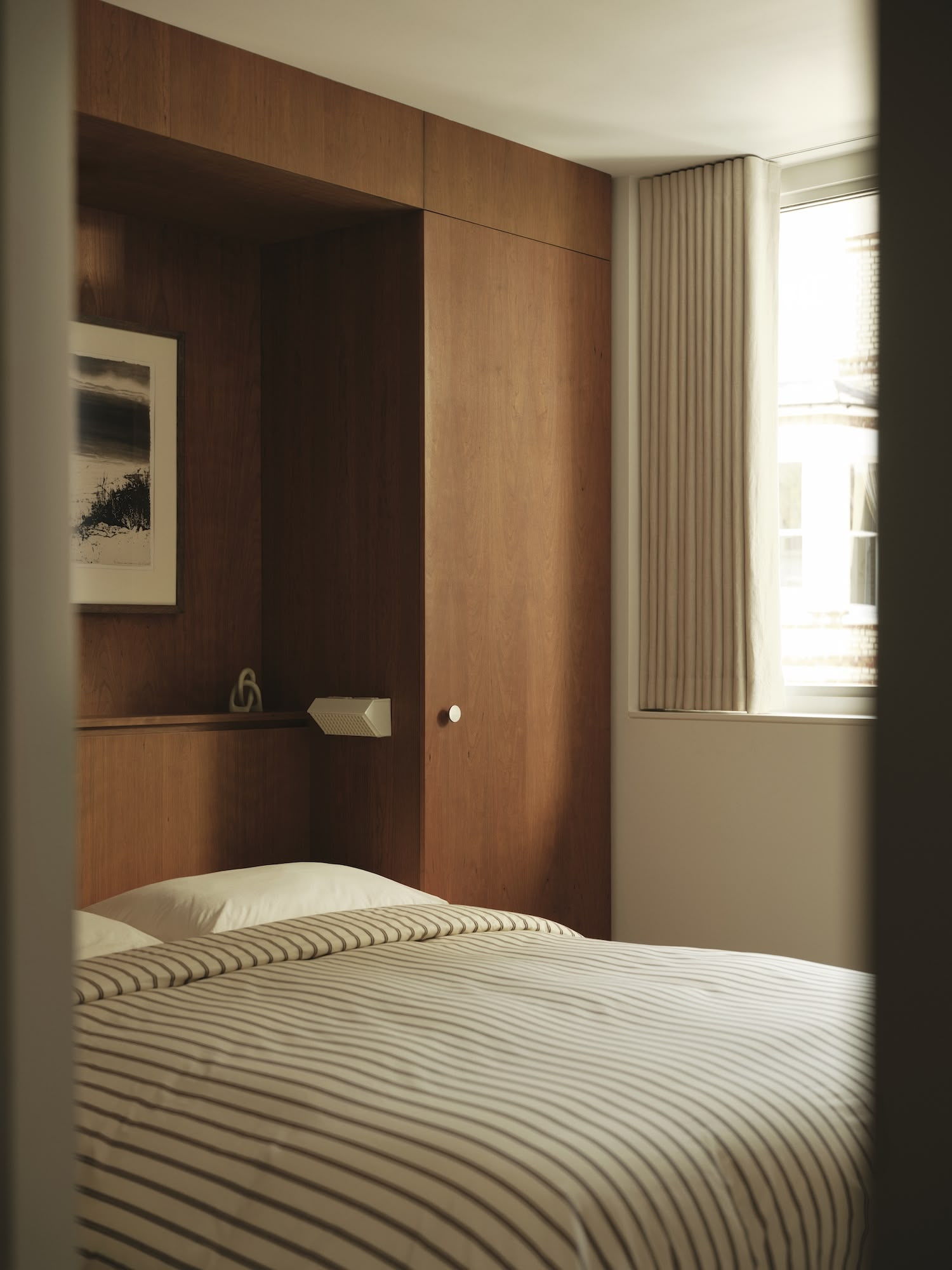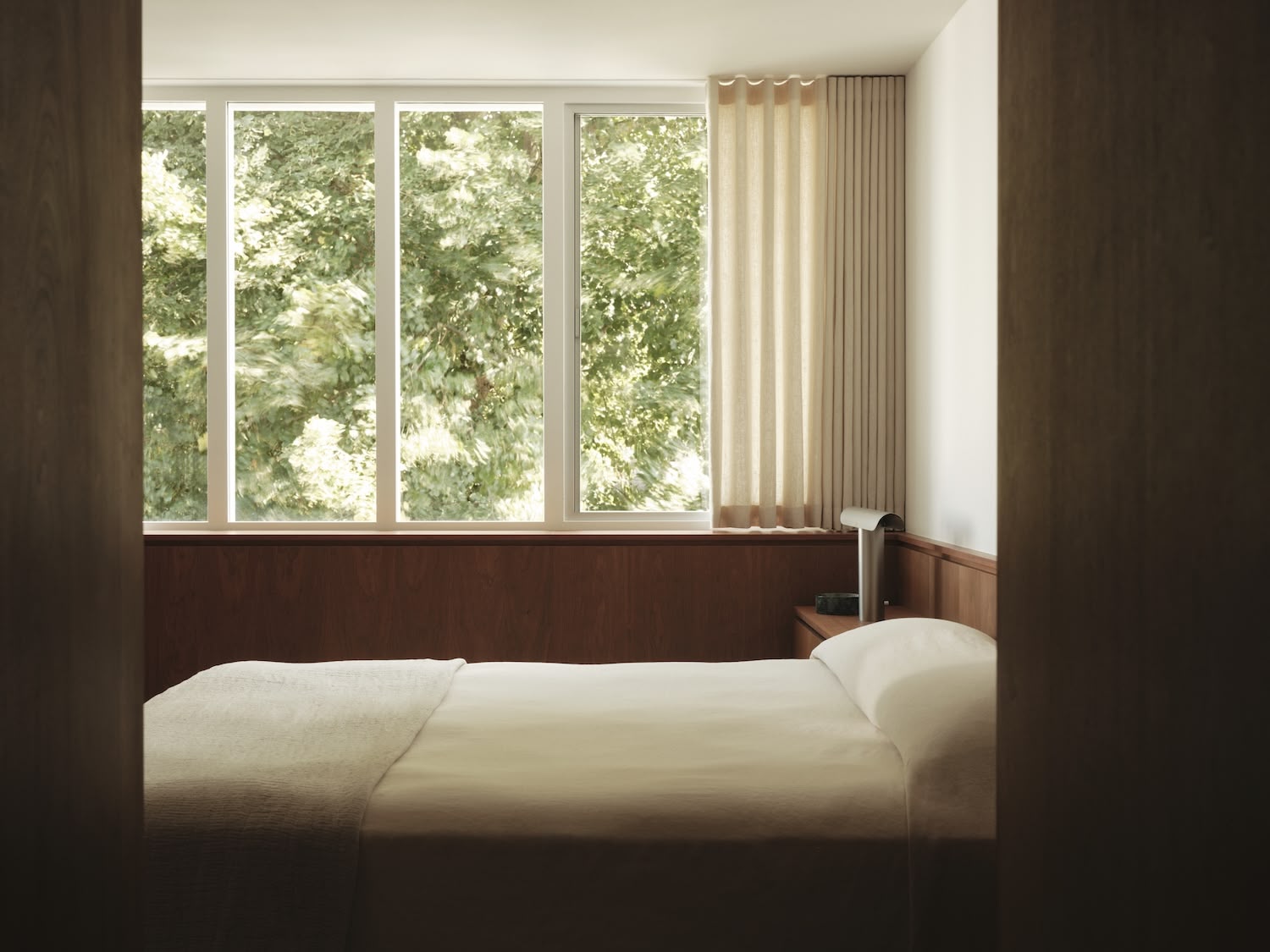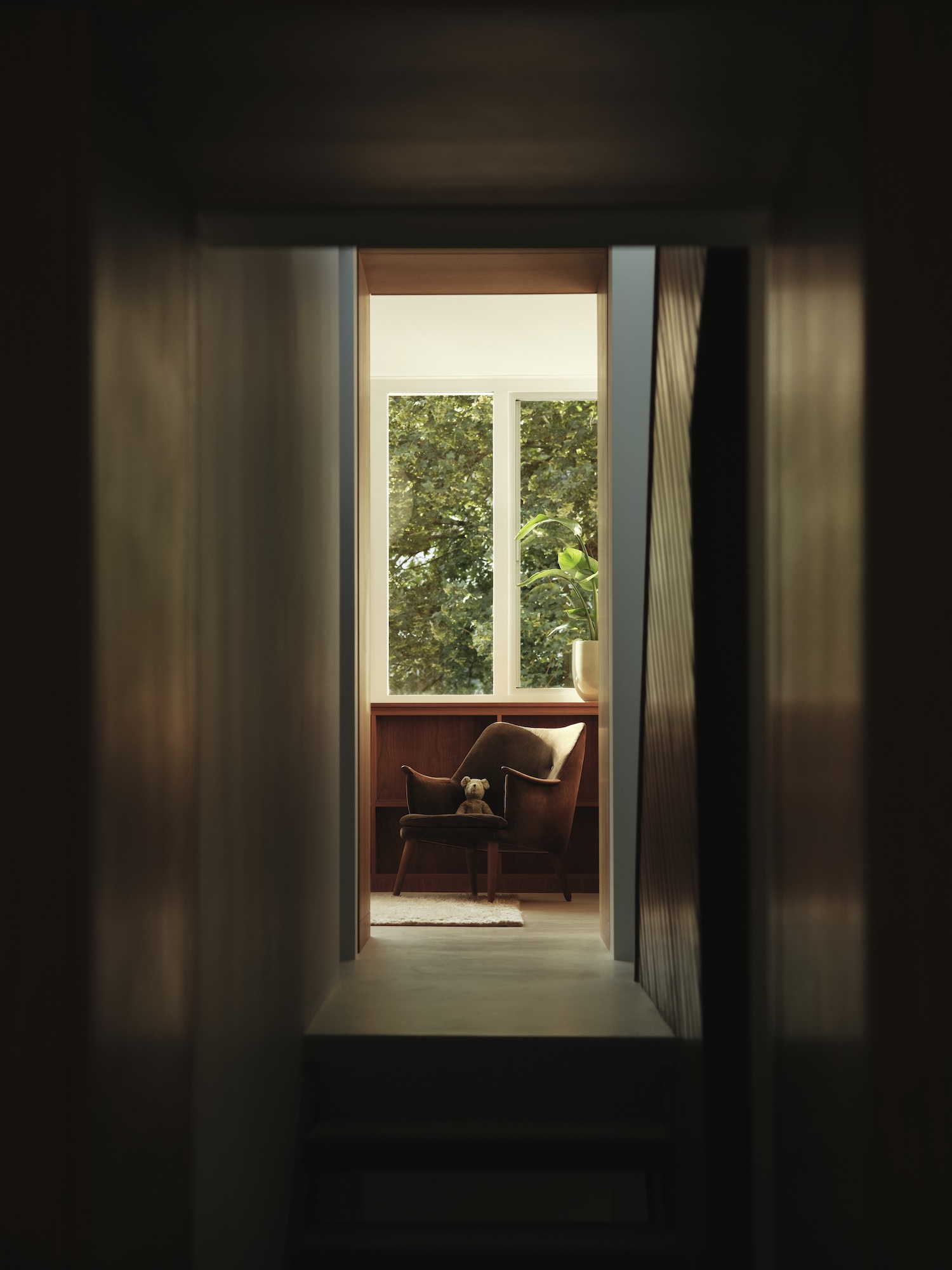Hampstead Home is a minimalist house located in London, United Kingdom, designed by Studio Hagen Hall. In the soft light of North London, the Paraná pine ceiling in “Pine Heath” tells a silent story. Its endangered wood grain—preserved rather than replaced—reveals the guiding ethos behind Studio Hagen Hall’s sensitive restoration of this 1960s Ted Levy townhouse. What initially catches the eye as merely beautiful timber becomes, on closer inspection, a deliberate conversation across time between original modernist intention and contemporary intervention.
This dialogue between past and present animates the entire home. The central stairwell, with its original timber cladding, becomes both anchor and muse for the renovation. Rather than fighting against the home’s modernist bones, Studio Hagen Hall embraces them, allowing the rare Paraná pine to establish the foundation for the entire material palette. The practice’s approach reflects what one might recognize as “thoughtful stewardship” rather than mere preservation.
The kitchen exemplifies this material conversation. Brushed stainless steel worktops hover above bespoke cabinetry while custom-milled sapele handles echo existing mahogany accents throughout the house. Period details like textured stippolyte glass cabinetry are not merely preserved but accentuated and recontextualized for contemporary use. The mechanical louvre window shutters above the sink represent a functional modern adaptation that respects the original modernist sensibility.
Throughout the home, Studio Hagen Hall employs what designer Louis Kahn might have called “thoughtful ordering” to create visual connections. Floor-to-ceiling pocket doors precisely aligned to create perfect sightlines from front to back. Storage spaces reoriented perpendicular to windows to frame views through deep timber-lined portals. Each design decision creates a rhythm of experiencing the space where horizontal datum lines and 45-degree angular changes guide the eye.
The color palette—rich greens in the raised living area and stairwell, earthen hues in the “color-drenched” tiled bathrooms—demonstrates the studio’s understanding that modernism need not be cold. These choices evoke the warmer, more humanist strains of mid-century design, particularly South African modernism with its connections to Cape Town coastal developments that originally inspired the home’s architecture.
